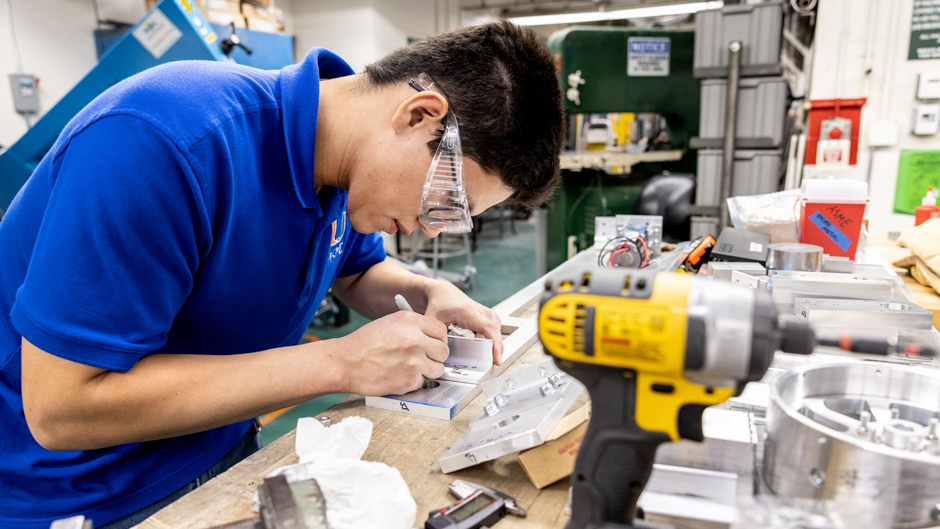The seeds of Neyton Baltodano Jr.’s love for engineering were sown at an early age, with Lego sets, episodes of “Star Trek: The Next Generation,” and documentaries on the powerful NASA rockets that sent men to the moon serving as the fertilizer that would help those seeds flourish.
Today Baltodano is the promising engineer he seemed destined to be at birth, working to perfect a novel technique that could help make the aerospace industry safer.
As a senior in the University of Miami College of Engineering, he is experimenting with and testing the strength of short carbon fibers, combining them with an epoxy resin and curing them in a process that creates an exceptionally strong carbon-reinforced material.
One goal is to 3D-print such materials and incorporate them into aircraft wings and other parts. By applying a voltage to the fibers, aircraft can be deiced in a much more seamless process than the traditional method of applying chemicals to the surface of aircraft to remove snow, ice, or frost, according to Baltodano, an aerospace engineering major who focuses on materials engineering.
The fibers, he added, could also be embedded with electrical pathways to help reveal deformities and difficult-to-detect damage in aircraft parts.
“But we’re still a long way away from perfecting those techniques,” as challenges remain in the 3D-printing process and in aligning the carbon fibers and ensuring the strength and conductivity of the final product, Baltodano explained.
Working under the direction of Emrah Celik, associate professor of mechanical and aerospace engineering, Baltodano is conducting research to refine the 3D-printing process.
His research is funded by NASA’s Florida Space Grant Consortium, an initiative that supports undergraduate research in aerospace-related projects.
Baltodano is excited about the increasing use of carbon fiber materials in the aviation industry, noting that 50 percent of the Boeing 787 jet airliner’s airframe is made up of nearly 50 percent carbon fiber-reinforced plastic and other composites.
Baltodano’s passion for aeronautics extends far beyond his research on carbon fiber components for aircraft. He wants to help humans return to and explore the moon. Last year, he served as one of the lead engineers for a College of Engineering team that successfully built a lunar rover that competed in NASA’s Lunabotics Challenge.
“The contest last year was all about lunar mining, building a robot that could dig into the soil to a certain depth,” he said.
This year, the team faces a different challenge: lunar construction. “We’ll not only have to dig into the soil,” Baltodano said. “Our rover will have to collect material and transport the soil to another location for the building of a berm. NASA has said that berms are critical to future moon missions as they help protect a launch pad and equipment from exhaust gases when a rocket takes off. So, we’re really psyched, and I’m ecstatic to be a part of it all.”

